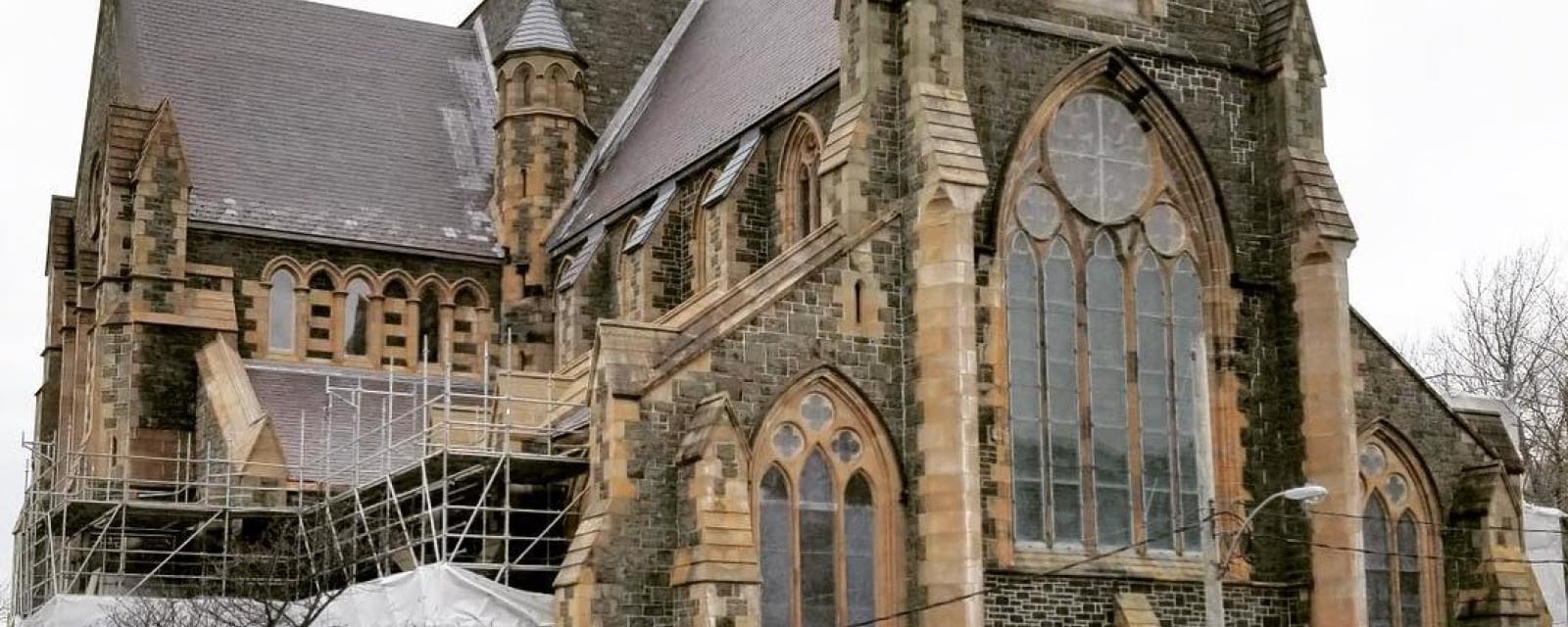A roof is more than the crowning top of a heritage building. A roof protects the interior and exterior from damage caused by rain, snow, sunlight, animals and even insects. Caretakers of heritage buildings need to pay special attention to ensure a roof is well-maintained in order to prevent costly damage to the remainder of the building. Roofing repair may be needed for this purpose.
For over 35 years, Roof Tile Management has been growing the roofing restoration and repair business in the Greater Toronto Area and South-Western Ontario. Specializing in interior and exterior restoration of heritage sites, we are committed to maintaining the cultural value of Canada’s most prominent heritage buildings. Heritage sites are an important part of our history which is why we work hard to preserve these buildings.
At Roof Tile Management, we have a passion for roof restoration. We have completed many roofing projects – both large and small – on some of Canada’s most iconic heritage buildings.
The Importance of Regular Roof Inspections
Rooftops should be inspected for damage a minimum of twice a year. It is possible to inspect sloped roofs from the ground using binoculars, but you will need roof access to inspect a flat roof. In addition to inspecting the roof exterior, you should also go up into the attic to see if you can spot any damage leaks, or holes made by animals.
Proper inspections should be done in two stages: a wet inspection and dry inspection.
Wet Roof Inspection
A wet roof inspection can be performed during a heavy rainfall. Look for tree branches knocking against your roof or walls in the wind, check your gutters to ensure they are not overflowing. Make sure downspouts are clear and the water is draining away from your home or site.
A heavy rainfall also presents a great opportunity to go up into the attic to look for leaks.
Take note of any concerns, then be sure to wait until the roof and ground is completely dry before taking care of them.
If called in to assess a roof, an expert heritage restorer can use specialized equipment to recreate the impact of a heavy rainfall. They are trained to pinpoint areas of potential damage, assess the impact to the structure, and provide recommendations regarding needed repairs.
Dry Roof Inspection
Ideally a dry roof inspection should be performed shortly after a rainfall, once both the roof and ground are dried out enough to be safe.
A critical step is to look for any standing water, along with damaged roof tiles. Inspect for damage in the joints and seams, and pay special attention to any area where different materials meet (e.g., between a slate roof and brick chimney or building flashing).
A second check of the attic is recommended to look for any damp areas once the rain has passed.
Roof Access
Sometimes a ladder just won’t do the job. Heritage buildings in dense residential areas, tall buildings, or buildings with steep sloped roofs may require some extra equipment to perform a proper inspection.
Professional inspectors may need scaffolding, roof anchors or a bucket truck to properly assess a site. In these instances, be sure you schedule and budget for regular professional inspections, to ensure the roof can continue to do the important work of protecting the rest of your heritage building.
In any case, always use proper safety equipment, and be careful to not damage the roof, gutters or spouts when accessing the roof and performing your inspection.
Assessing Damage
If you or your professional heritage restorer spots roof damage or leaking, a more thorough damage assessment will need to be completed.
In some cases, the cause of the damage may be simple to spot. In others, the root cause may be related to structural damage or flaws in the roofing material. Historical experts familiar with heritage roofing materials can provide advice on the architecture and materials specific to the era of your heritage build, and help anticipate some of the challenges that can arise when approaching roof repair.
Roofing Repair: Restoring and Repairing Damaged Roofs, Replacing Roof Tiles
When it’s time to get to work, the professional restorer will take special care to use historically-accurate material to match the existing roof, and hand-cut and shape tiles, wood or stone to fit around corners and chimneys when performing roof restorations.
While they’re undertaking work on the roof surface, it’s a good idea to have them look for, and repair, damage to flashing, chimneys and other roof elements.
If a full restoration is needed, they can provide a road map to help lead you through the job, listing the materials to be used, work to be completed, timing and anticipated budget.
While the costs of roof repair can be high, proper roof repair can save you from more costly damage to your building down the road. If you need a professional roof inspection, or a company to assess your roof repair or restoration project, Contact Roof Tile Management today!

